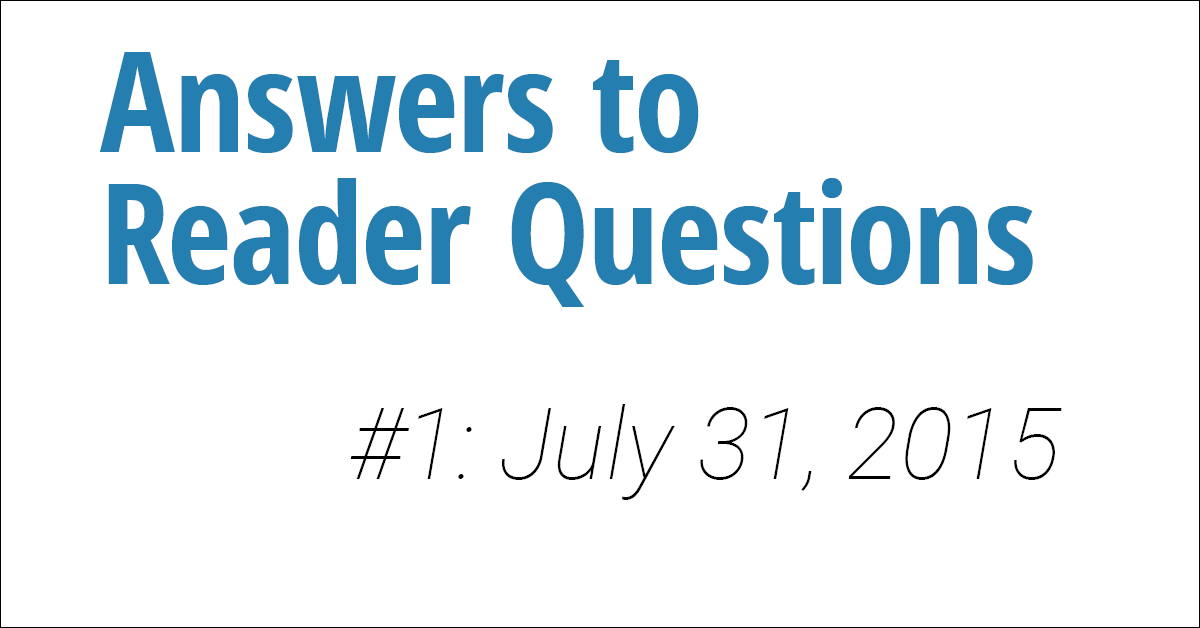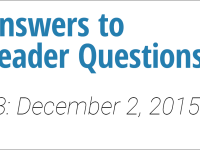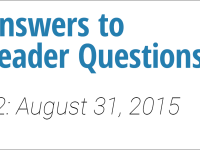On the final Friday of every month, I answer questions sent in by readers. If you have a question, visit this page, read the rules, and submit it!
Today marks the very first “Reader Questions” column, so it seems like a bit of preamble is appropriate. I write this blog first and foremost because I want to make sports nutrition something that is both important and easy to understand for a climber, the same way training was once made over (and continues to be). But in my own little corner, I can only guess at what people want to know or don’t yet understand—by writing in and asking me questions, you give me true direction, and for that I am thankful.
I assume this site will evolve as time passes—and there is a lot I hope to do with it—but wherever it ends up, it will be inspired by the feedback I get. So keep writing in with your questions and comments, and I’ll keep doing whatever I can to serve you better.
Now, onto the questions!
Question #1
I’ve suffered from acid reflux my entire life and try to control it through diet and lifestyle, but I’m having trouble around training. If I eat too soon before I train then my meal isn’t fully digested and I feel awful, but if I wait or train too long then I get hungry and feel awful. Are there any good foods that would provide me with enough energy to train without getting hungry but not be full?
Acid reflux, or gastroesophageal reflux disease (GERD), is an extremely common digestive ailment affecting between 18-28% of Americans—but given how common the disease is, there is shockingly little “good” research on how diet and lifestyle affects it. While there are many foods, drinks, and lifestyle changes that are claimed to increase or decrease the incidence or severity of GERD, the only two factors that have somewhat solid evidence behind them are losing weight and sleeping with two pillows to elevate the head.
This isn’t to say there isn’t anything you can do, though! There is at least one dietary factor that could potentially help both your GERD and also maintaining energy during exercise: a high-fiber diet. There aren’t any randomized trials on fiber and GERD, but one study did correlate a diet high in fiber with lower incidence of GERD. In addition, high-fiber foods release their carbohydrate very slowly, which makes them a good source of lasting energy when consumed before exercise.
High-fiber foods do slightly slow down gastric emptying, but if you eat a high-fiber meal about 2 hours before you begin to train (the minimum recommended time to help prevent reflux) then there will still be ample time for your stomach to empty. More importantly, high-fiber foods significantly slow down the absorption of carbohydrates, which will allow you to train with the benefits of carbohydrates, and delay the return of hunger.
Good high-fiber, carb-rich choices include legumes, whole grains, starchy vegetables, and fruits—but digestion and absorption is slowed in any meal with a high-fiber component, so you could also mix less fibrous carbs with non-starchy fiber sources like vegetables. If you are not used to a high-fiber diet, it may be worth increasing your fiber intake slowly in order to give your gut bacteria time to adjust and thereby prevent GI complaints like bloating and gas.
Hopefully more research will be devoted to exploring the true dietary and lifestyle triggers of GERD, but in the meantime, a high-fiber diet is your best bet. If I hear of new research on this topic in the future, I’ll be sure to release an update!
Question #2
How can I get 120 g of protein as a 5-foot-tall, 105 lb woman, while trying to keep my calories at 1,400 calories a day (unless it’s a long workout day)? That’s a lot of protein to fit into 1,400 calories. I do notice a difference in my recovery if I eat lots of protein, but I’m always trying to keep a lean climbing weight.
This is a good question for a variety of reasons:
First, it’s very likely that you could eat more than 1,400 calories in a given day and still maintain weight. A basic RMR (resting metabolic rate) calculation allowed me to estimate that 1,400 calories is the amount you’d need on a given day that is mostly sedentary (no real exercise, just walking around and doing chores)—once you add exercise in, you can boost your caloric intake by at least as much as you burned (to continue maintaining) or even by an additional 5% (to encourage muscle growth).
The calories you’re “missing” aren’t responsible for your weight maintenance because they’re calories that would otherwise be spent on repairing and building muscle, an energetically expensive process. If you get them, they’ll speed up or otherwise increase muscle repair and growth; if you don’t get them, then your muscles will save the calories for repairs and forgo growth. So in a way, they’re kind of “free” calories because you can get them or not without significantly affecting your body fat—at least so long as you’re active!
Second, this question drives at a peculiarity of protein, which is that our bodies really don’t want to use it as fuel. In fact, they can’t use it as a fuel until they convert it to glucose first in a process known as gluconeogenesis. Gluconeogenesis allows us to derive energy from compounds we otherwise could not (like amino acids and lactate), but it takes energy to run. In the case of protein, it appears that the energetic cost of gluconeogenesis is upwards of 33% of the energy contained in the molecule—which essentially means that the net energy we derive from each gram of protein is only 2.66 calories, not the technical 4 calories.
Generally speaking, the addition of extra protein to a diet is consistently correlated with better weight maintenance and improved weight loss success, which suggests that adding calories from protein does not negatively tip the caloric balance. Protein is never converted to fat (at least not in any real-life scenario) because that tacks on an additional energetic cost—the protein would first need to be converted to glucose at a loss, and then to fat at a loss again. It’s just not metabolically efficient!
If you don’t change anything about your diet except to add in extra protein, your weight will almost certainly remain the same—but you’ll also experience all the ergogenic benefits of a high-protein diet. It’s even likely you could further add in calories from carbohydrates and fats as well and still maintain weight while simultaneously increasing your energy, improving recovery, and further encouraging muscle growth. My recommendation is to try it out and see—weight changes are easy to monitor with a scale, so any unwanted increases can easily be reversed (just make sure it’s not an increase in muscle you’re reversing)!
Question #3
How can I eat enough fuel for alpine days? I’m not hungry at 4AM, and then I have to start hiking/climbing by 5AM. I can usually only manage to get in 250-300 calories that early and then I eat 250 calories a few hours later, but I bonk at around 2-3PM.
There are two separate issues here: eating in the early morning when you’re not hungry and getting enough calories during a hike/climb.
The first is more difficult to solve because most people find it challenging to force themselves to eat when they’re not hungry, and there’s no way to get calories without eating. The best thing you can do is to make sure you have something available that is both appealing and easy to consume. Blended smoothies are superb because they don’t require much effort to drink, they’re tasty, and it’s easy to add carbs, protein, and fats in the right measures—but solid foods can work too depending on your own proclivities.
It’s also worth preparing whatever it is you plan on eating at 4AM in advance, that way you don’t have to simulataneously muster up the will to prepare food while not hungry. Many people find it challenging to prepare food they already know they don’t want to eat, especially when they’re tired and groggy because it’s 4 in the morning.
The second issue is easier and can be solved in several ways. One is to add a sports drink mix to your water, which works well if you don’t eat mostly because you’re not hungry. You have to drink water anyway, and by adding a sports drink mix to it you’ll also get carbs and calories. I have a variety of resources of using sports drinks effectively here.
You can also bring along carb-rich foods that are easy to eat while exercising. Granola bars and dried fruit are both low in weight and high in carbohydrates, and can be snacked on in regular intervals while hiking and during rests while climbing. Of course, when you’re eating solid food it helps to be hungry.
Finally, you can increase the size of your mid-morning meal. 250 calories is a very low amount compared to the exertion of hiking and climbing, and is more representative of the amount of energy you need every hour during a long day of continuous exertion. If you’ve just hiked or climbed for four hours, and will have another four hours before you eat again, then it would be better to aim for around 1,000 calories. Again, this is easier if you’re hungry, but energy-dense foods help a lot as well.
No matter what, the most important thing is to ensure you consume enough energy (particularly carbs) to prevent bonking. The human liver can only hold around 80-100 grams of glycogen and the muscles only 200-500, depending on your muscle mass, training level, and typical carbohydrate consumption. If you’re not fat-adapted (which I would recommend you not be), you can easily burn through all that glycogen and suffer from dropping blood sugar levels; replacing that glycogen with dietary carbs is the only way to keep going while feeling good.
Question #4
How many calories do you need per hour while on a multi-pitch or big-wall climb?
There has only been a single study that I’m aware of that tracked caloric expenditure while climbing, and it determined that elite climbers burned about 14 calories per minute on easy climbs and 16 calories per minute on difficult climbs while recreational climbers burned about 16.5 calories per minute on easy climbs. This is only a single study, but the results are similar to the caloric costs of other high-intensity sports and probably close to accurate.
The data also suggests (as we would expect) that the relative difficulty of a climb is more important than the absolute difficulty. A recreational climber on an “easy” route (probably not easy to them) burned virtually the same amount of calories per minute as an elite climber on a challenging route. Thus, we can reasonably expect an “easy climb” as defined by your relative ability to burn the same as an “easy climb” for anyone else, and same thing for a difficult climb or anything in-between.
You should also consider the calories burned while belaying. Belaying isn’t particularly energy-intensive, but it is movement, and when you’re on a multi-pitch or big wall climb you’re going to spend a lot of time doing it. Strangely enough, no one has quantified the caloric cost of belaying, but I would be surprised if it’s more than 3-4 calories per minute (by comparison, most light household chores burn around 2-3 calories per minute). This isn’t a lot, but it’s something.
In the end, the best way to estimate your caloric need is to keep track of how long you climb and belay for. For most people, the total will probably be in the realm of 300-500 calories per hour—but it’ll vary considerably depending on how long you rest, how hard the climbs are, and how much you weigh (bigger people burn more calories than smaller ones). So think about how long you usually spend climbing and belaying while on a multi-pitch or big wall climb and plan ahead to bring an appropriate amount of food!
Have a Question for Next Month?
That’s it for this month, but I’m already looking forward to next month! If you have a question you’d like answered, visit this page to read my (very easy) guidelines and then submit one.











Super super insightful! Thanks so much
Thanksamundo for the post.Really thank you! Awesome. bkgacgecaadcedee